Bihar Board Class 12 English Question Paper PDF with Solutions is available for download. The Bihar School Examination Board (BSEB) conducted the Class 12 examination for a total duration of 3 hours 15 minutes, and the Bihar Board Class 12 English question paper was of a total of 100 marks.
Bihar Board Class 12 English 2025 Question Paper with Solutions Set I
| Bihar Board Class 12 English Set I 2025 Question Paper with Answer Key | Check Solutions |

Do you think we will be unhappy ......... ?
I have nothing ......... to say.
London is the ......... city in England.
I am not ill, but I am ......... tired.
Are they not cheating us ?
He said, “I am going to college just now."
Have you ......... Amrita ?
She ......... know the answer.
The house caught fire. All the books were burnt.
Chose the correctly spelt word :
Veena had written a letter.
He is wiser than you.
The examination will begin ......... Monday.
I sing ......... .
Choose the correct sentence:
A variety of music ......... available here.
I have lived in this town ......... childhood.
Choose the correct spelling :
The antonym of ‘Admit’ is
The synonym of 'Strategy' is
The antonym of 'Common' is
The synonym of 'Justify' is
The antonym of 'Duplicate' is
He is a straightforward man and keeps flatterers .................... .
He is the .................... of the two brothers.
The cake tasted .................... sweet that I couldn't finish it.
The teacher said, "Is anyone there ?"
(Choose the correct indirect speech)
We .................... be punctual.
Is Hindi spoken by them?
(Choose the correct active voice)
Smita is rich. Smita is a miser.
(Choose the correct combination)
Shyam teaches Mathematics .................... English.
You take it very easy, .................... ?
I am going to .................... ,
Choose the correct spelling:
He speaks .................... French nor English.
The synonym of 'Genuine' is
We arrived on .................... fourth of July.
The ladder leaned .................... the wall.
Choose the correct spelling:
I .................... swim across the river.
.................... they played well, they could not win.
I always .................... the poor.
Her employer always finds fault .................... her.
Let us have .................... drink now.
My friend and I .................... our homework everyday.
The cat is hiding .................... the bed.
.................... of my friends are coming to the party.
I can't believe .................... my purse at home.
He declared his .................... .
They were surprised .................... hear him sing.
He has properly .................... the rules and regulations.
.................... a borrower nor a lender be.
India is progressing .................... .
I want to take .................... classes this year.
Have some more tea, .................... ?
The rise and fall of the tide .................... due to lunar influence.
The children locked .................... up in the cupboard.
The synonym of 'Concealed' is
The antonym of 'Urban' is
'To make both ends meet' means
In England Printing Press was invented in
Who wrote 'Mac Flecknoe'?
About .................... Christianity began to spread in England.
Who is known as 'The Nightingale of India'?
Gandhiji completely dominated Indian politics
Nanukaka went to the .................... Auto Dealers.
.................... got the Nobel Prize in literature in 1950.
.................... is the chief source of revenue of a newspaper.
Lomov is a man of .................... temperament.
The redness of the fire appears .................... to the poet.
"A Child is Born" is taken from
The last of the pre-historic invention was
Macavity is called
Tower of Silence is related to
A .................... is mentioned in the poem 'Snake'.
.................... spent her childhood days with her grandmother.
The food in Indian villages was served on .................... leaves.
Choobookov is a
View Solution
Step 1: Understanding the Concept
This question asks for the profession or social status of the character Chubukov (misspelled as Choobookov).
Step 2: Detailed Explanation
Stepan Stepanovitch Chubukov is a central character in Anton Chekhov's famous one-act play, "The Proposal". He is the father of Natalya Stepanovna and the neighbor of Ivan Lomov. The entire plot revolves around Lomov's attempt to propose to Natalya. Chubukov is depicted as a landowner, concerned with property, social status, and marrying off his daughter.
Step 3: Final Answer
Chubukov is a landowner in the play "The Proposal".
Quick Tip: Remembering the basic details of main characters in famous plays and stories (like their names, relationships, and professions) is key to answering literature-based questions.
.................... wants to gladly accept death.
'Leaves of Grass' was published in
'Nature without check with original ...................'
Autumn starts with the departure of .................... season.
.................... wrote a number of children-poems.
'A pulse in the eternal mind' is from
Nanukaka managed to travel in 2nd class on a .................... ticket.
Dr. Radhakrishnan never lost his faith in
The curio-dealer sold the gourd to a wealthy
Which language is the second language of India ?
Who became the President of India in 1967 ?
Who was one of the greatest orators in American history ?
.................... is told by an aunt.
H. E. Bates belonged to .................... .
The English language is much younger than
T. S. Eliot is a .................... poet.
Old English Period covers
Who wrote 'Endymion' and 'Hyperion'?
The name 'Augustan' was given to .................... Century.
Chaucer, Langland and Wycliffe are important writers of
A snake appeared on a trough of the .................... to sip water.
Who was born in the U.S.A. but eventually settled in England ?
Write an essay on the following in about 150-200 words:
Clean India Movement
Write an essay on the following in about 150-200 words:
Climate Change
Write an essay on the following in about 150-200 words:
Social Justice
Write an essay on the following in about 150-200 words:
Education for Everyone
Write an essay on the following in about 150-200 words:
Bihar of your Dreams
Explain the following:
I have a dream that my four children will one day live in a nation where they will not be judged by the colour of their skin but by the content of their character.
Explain the following:
Justice was tolerably fair. The ordinary rule was to avoid courts.
Explain the following:
You two'd better hurry up and get married — Have me in peace.
Explain the following:
I went to India to see and listen to two groups of people, the young intellectuals in the cities and the peasants in the villages.
Explain the following:
The voice of my education said to me
He must be killed
Explain the following:
Can you, that I lived in such a house and
Was proud, and loved ....................
Explain the following:
There shall be
In that rich earth a richer dust concealed ;
A dust whom England bore, shaped, made aware
Explain the following:
Nurses to the graves are gone,
And the prams go rolling on.
Write a letter to your sister congratulating her on her success in the NEET.
Write an application to the Principal asking him / her for leave to attend a workshop on Yoga.
What, according to Gandhiji, is the 'sheet anchor of our hope'?
What is the business of education?
What are the 'trials and tribulations' that Martin Luther King Jr. talks about?
What do free people take for granted?
Who are the 'whispering neighbours'?
What does the speaker, in 'Song of Myself', observe in summer?
How did the snake drink water?
In what sense does the fire forget its dead?
Write a note on the development of Indian poetry in English.
Who were known as the University Wits?
Write the summary of the following poem: My Grandmother's House
Write the summary of the following poem: Ode to Autumn
Write the summary of the following poem: Snake
Write the summary of the following prose-piece: The Artist
Write the summary of the following prose-piece: How Free is the Press
Write the summary of the following prose-piece: Indian Civilization and Culture
Write a note on the dialects of Middle English.
OR
Write a note on English as a second language of India.
OR
Write a note on American English.
Match the names of the poems given in List-A with their poets in List-B
List-A
i) An Epitaph
ii) Snake
iii) Song of Myself
iv) Now the Leaves are Falling Fast
v) Fire-Hymn
List-B
a) W. H. Auden
b) Walter de la Mare
c) D. H. Lawrence
d) K. N. Daruwalla
e) Walt Whitman
Translate any five into English:
Match the names of the prose-pieces in List-A with their authors in List-B
List-A
i) How Free is the Press
ii) Bharat is My Home
iii) The Artist
iv) I Have a Dream
v) Ideas That Have Helped Mankind
List-B
a) Martin Luther King, Jr.
b) Bertrand Russell
c) Dr. Zakir Hussain
d) Dorothy L. Sayers
e) Shiga Naoya
What is the best tonic for our mind and body?
What should we practise when we are relaxed in bed?
What should we do to be cheerful?
What happens when we constantly think about negative things?
Write a précis of the following passage and give a suitable title:
\textit{The character of good men is like that of trees. They live for others and do not lose their qualities even in losing their lives. They always follow the right path. Praise is immaterial to them. To live for one's own sake is to lead the life of beasts. Only those who lay down their lives for others will live forever in a world of bliss.
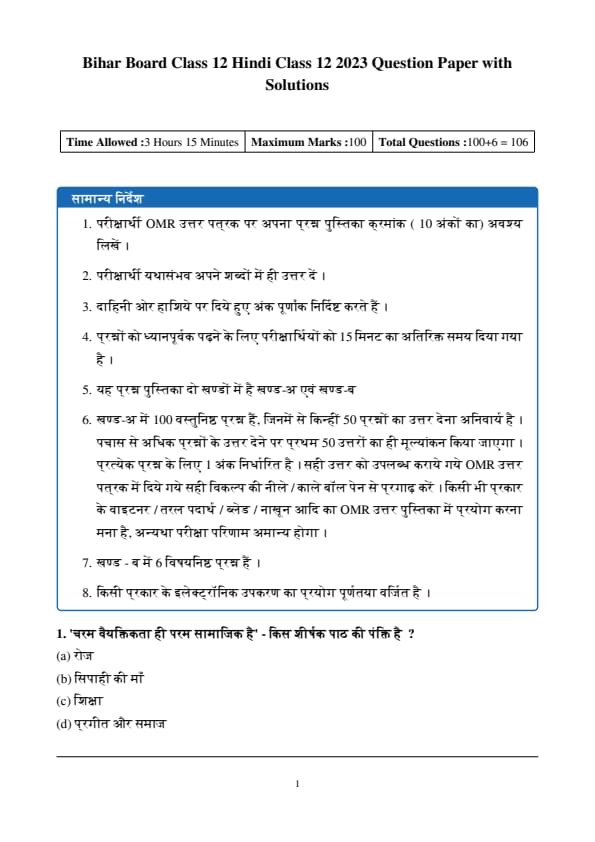
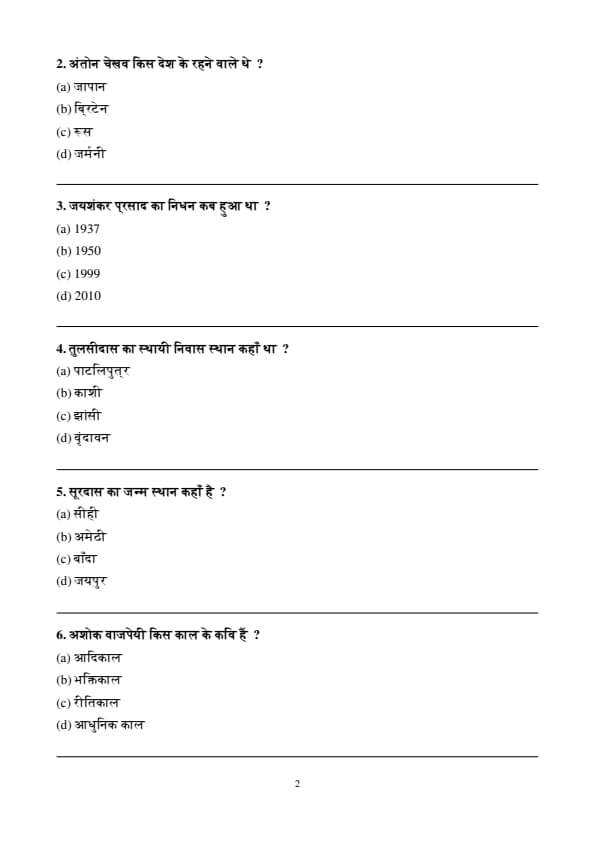
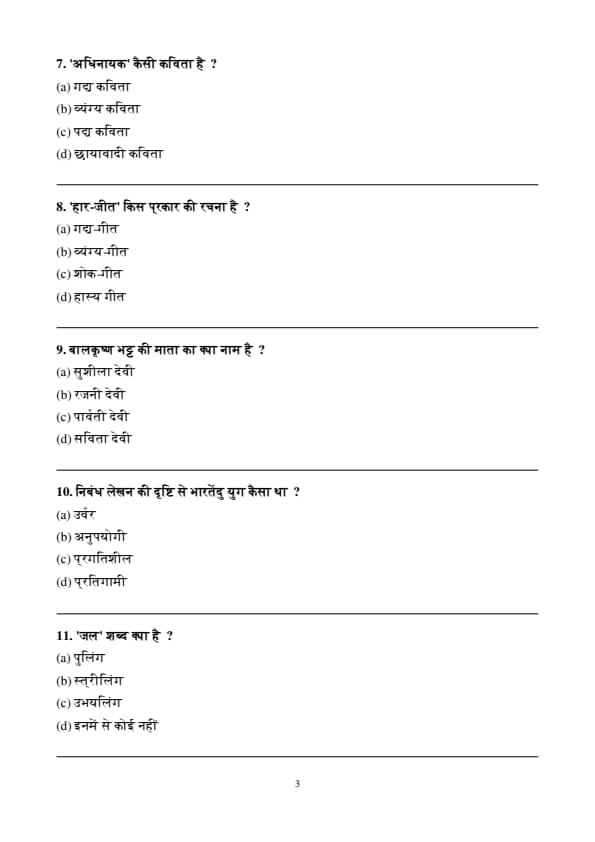
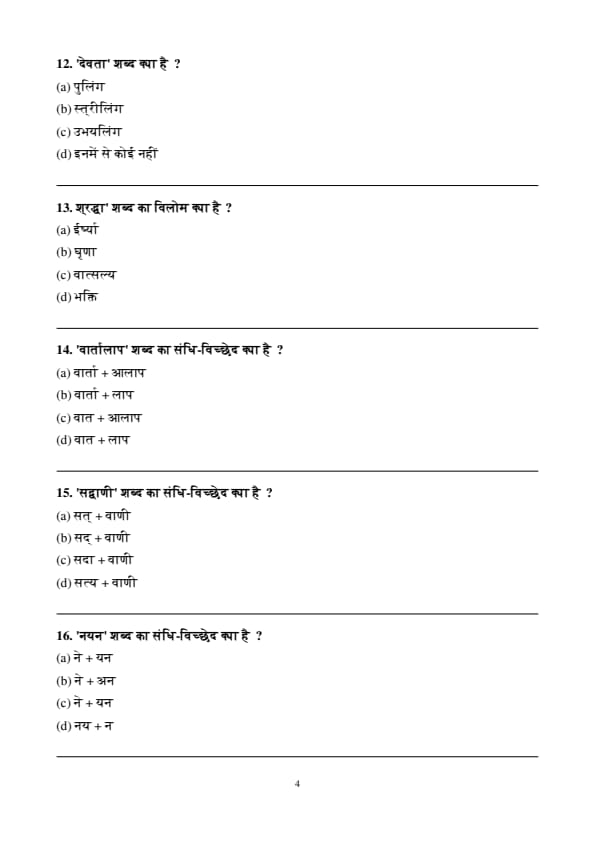
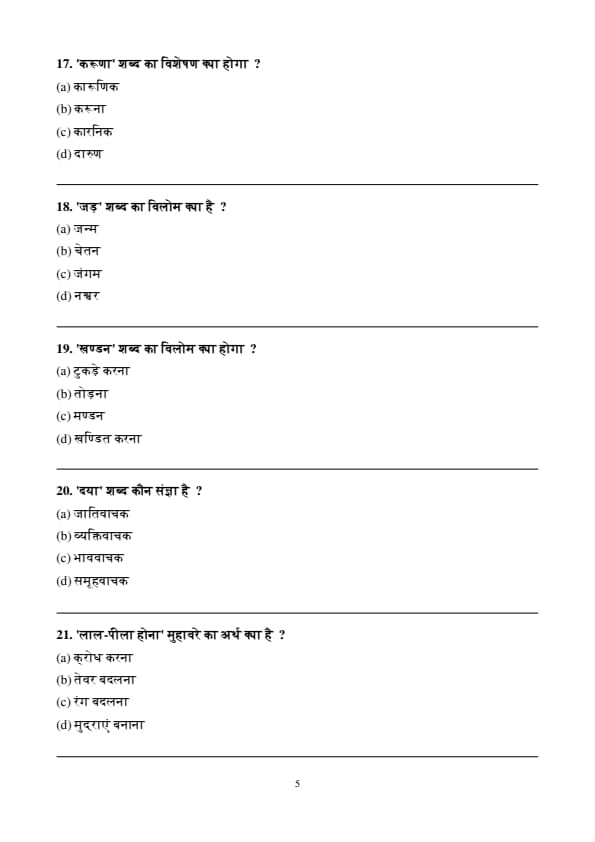
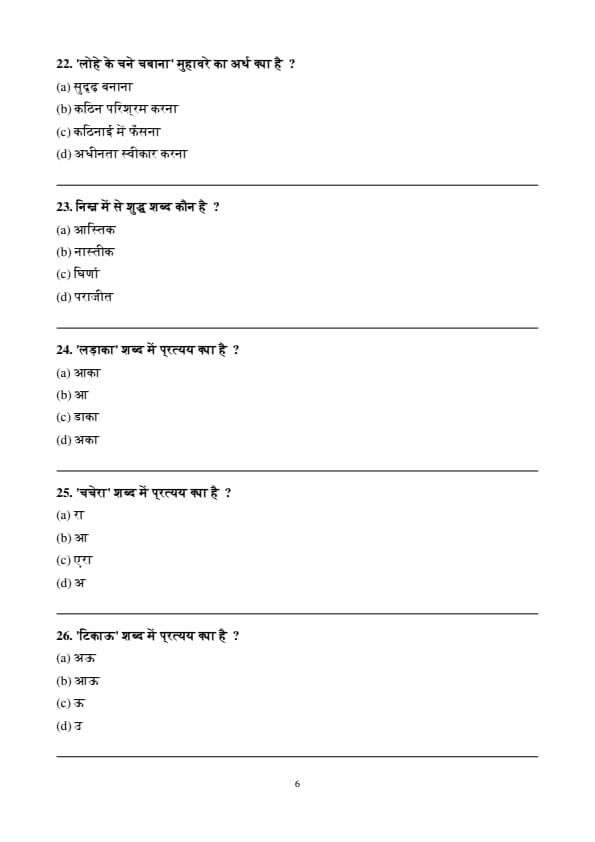
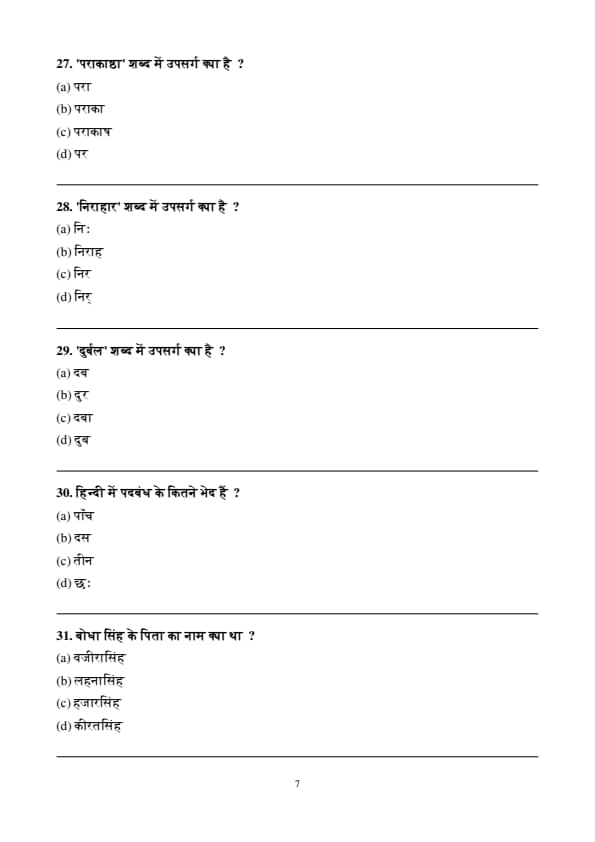
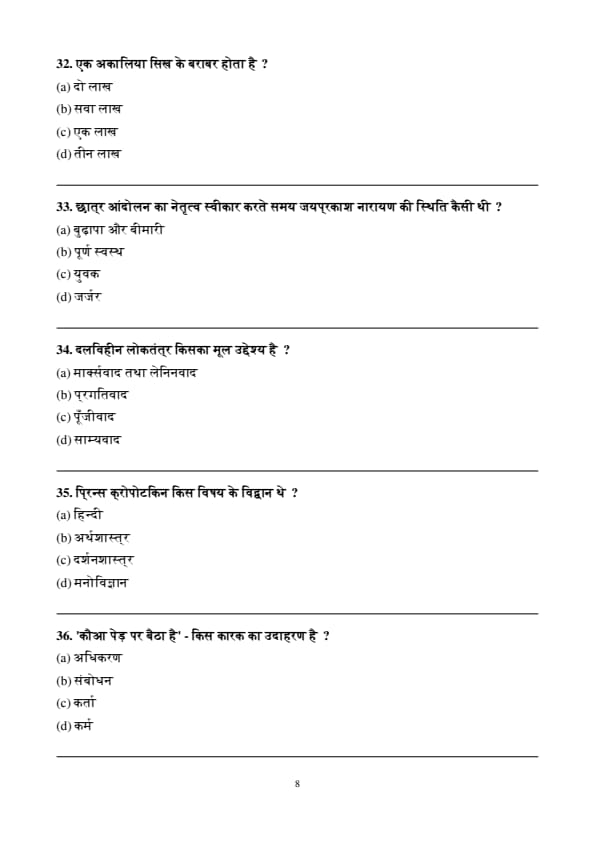
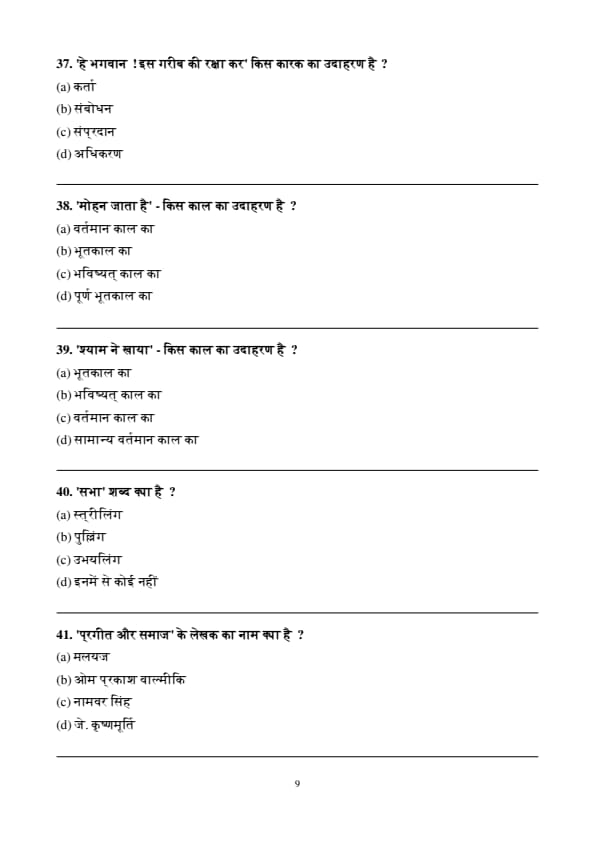
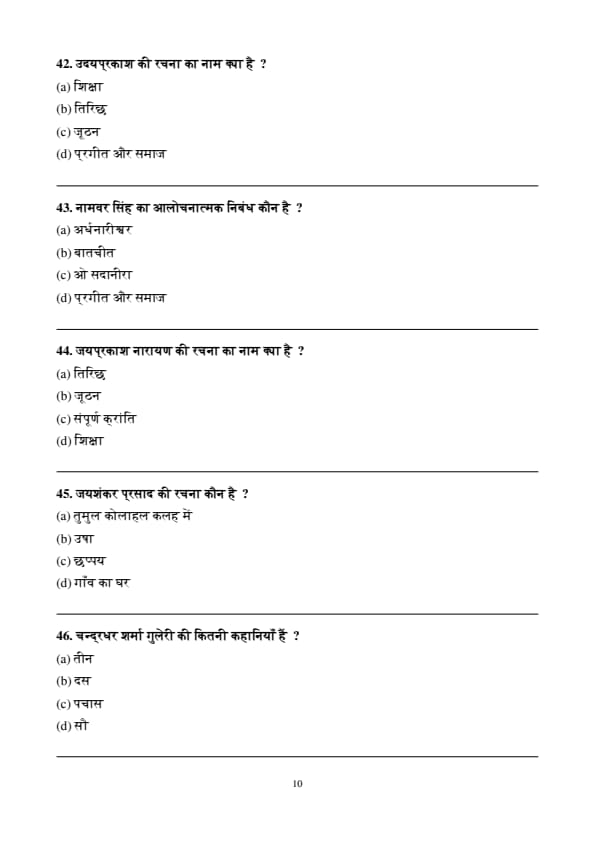
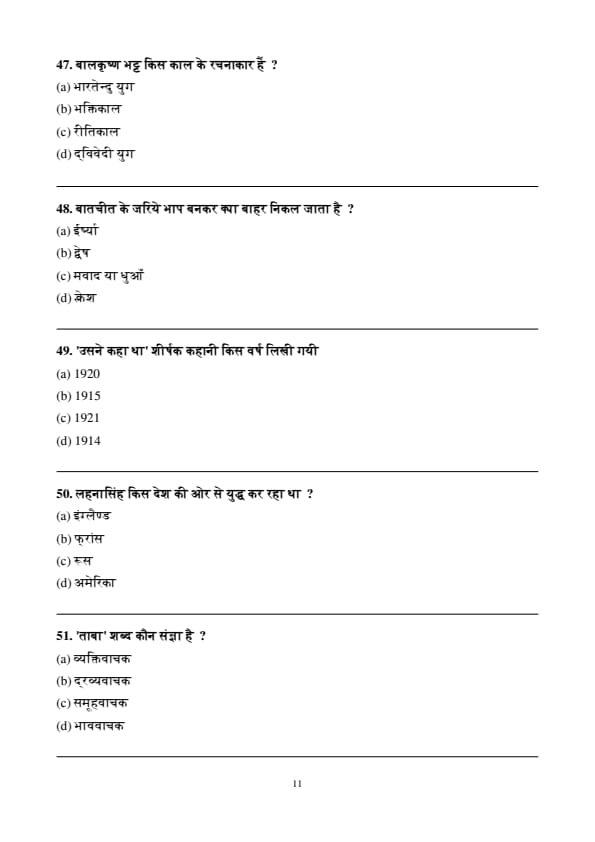
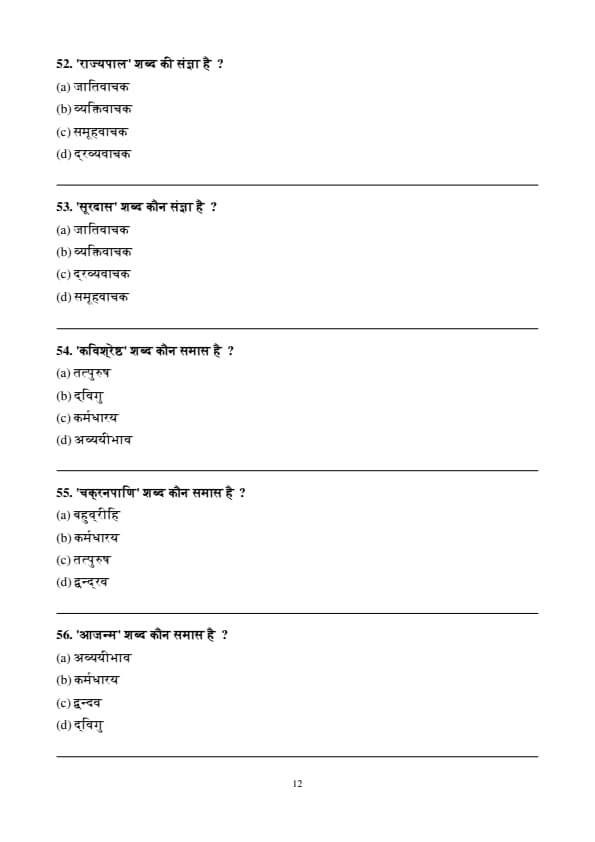
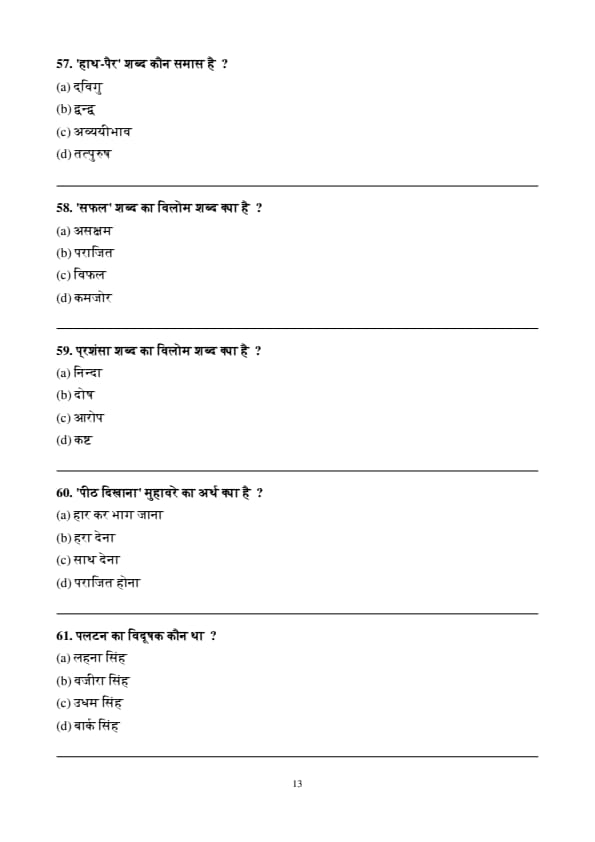
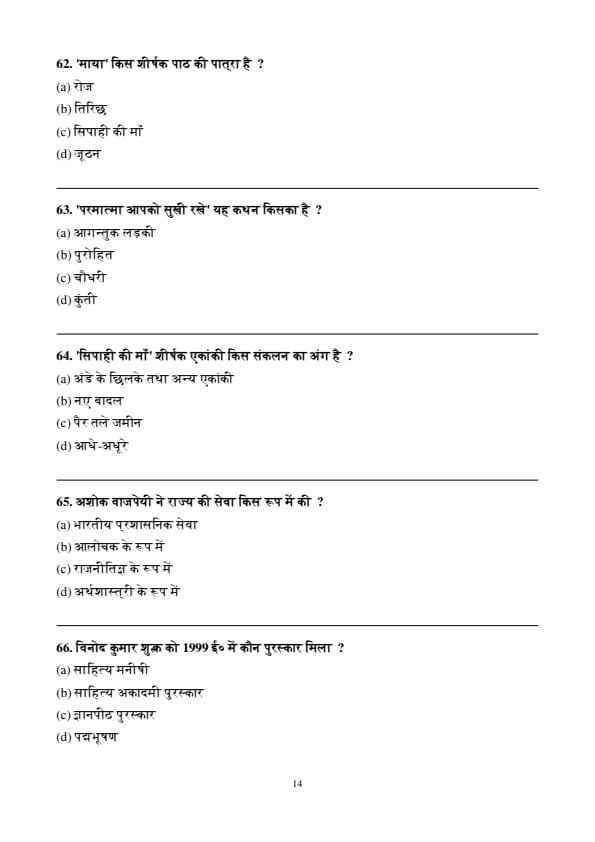
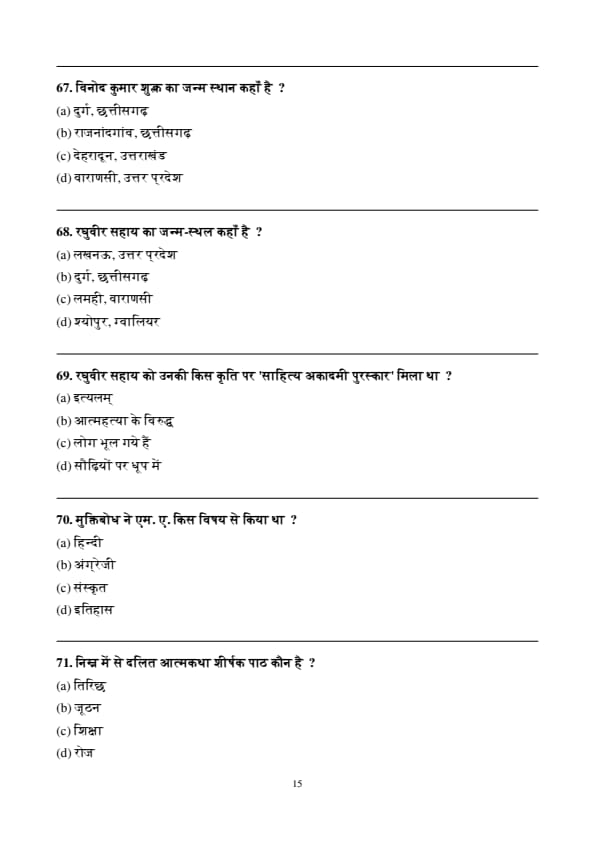
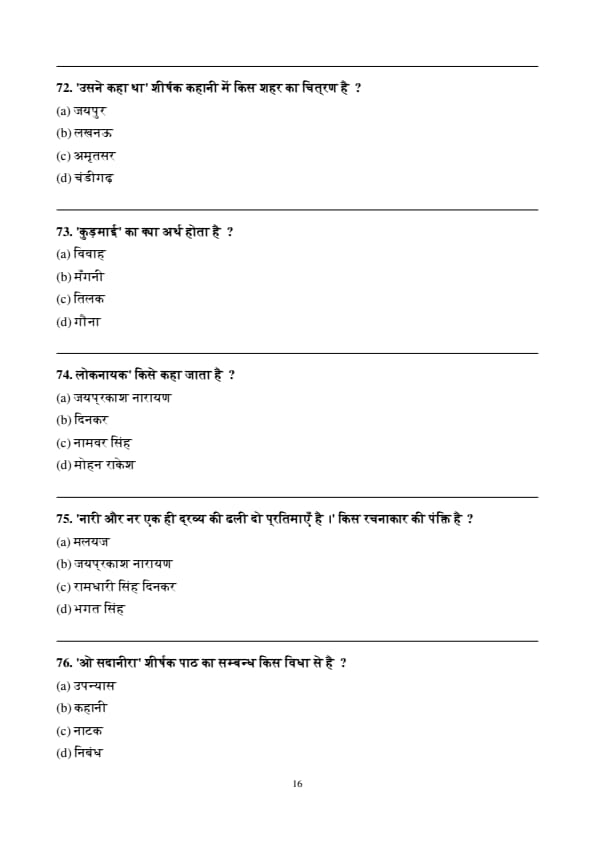
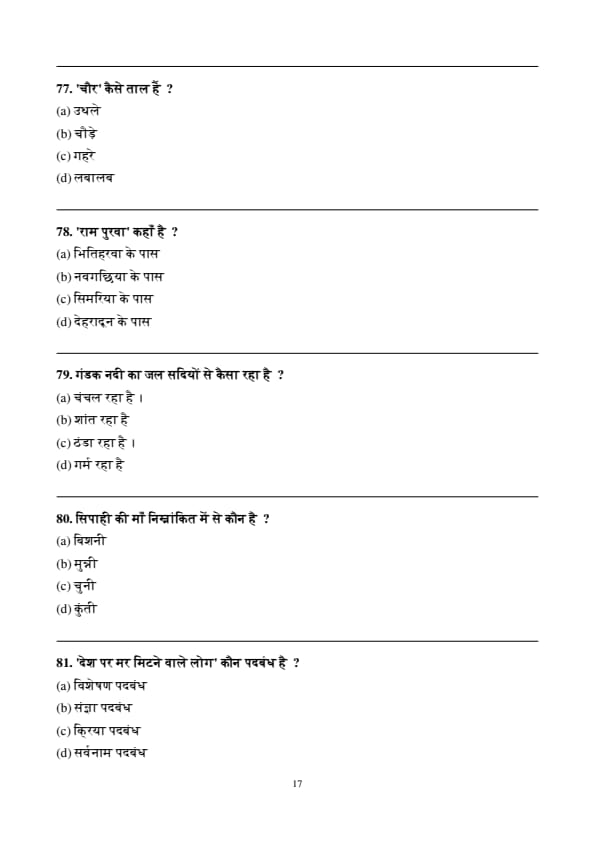
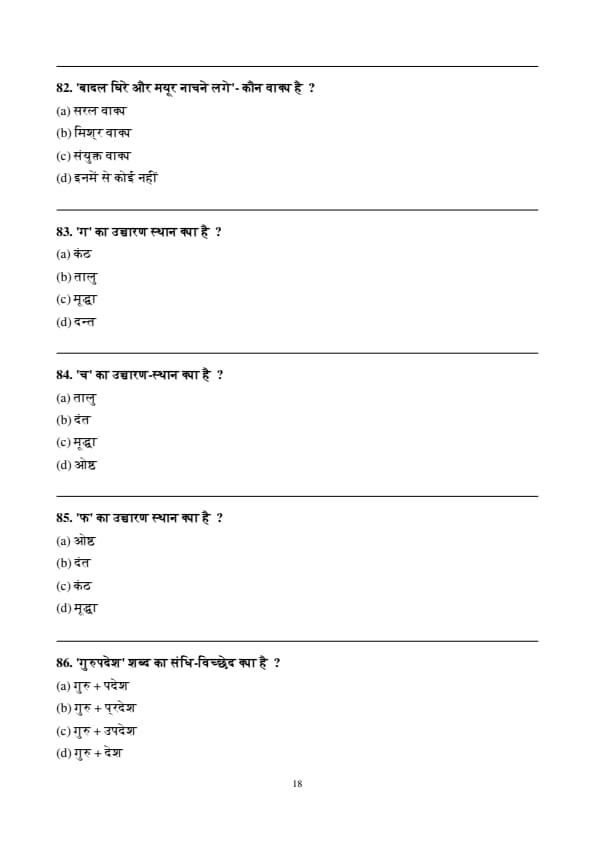
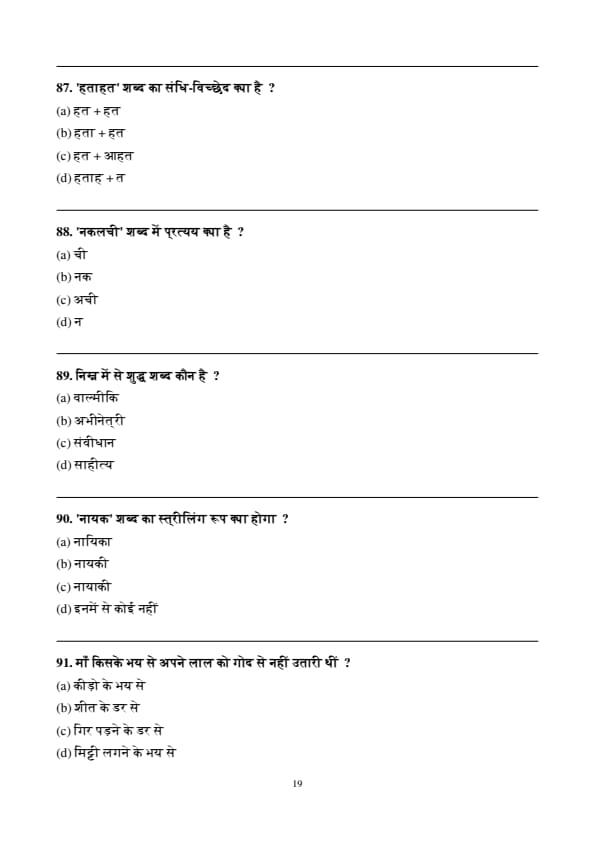
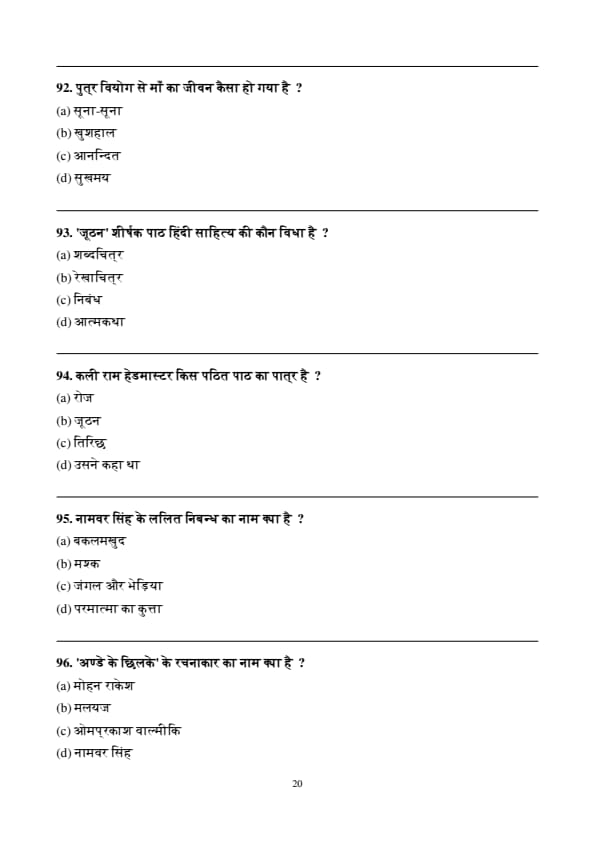
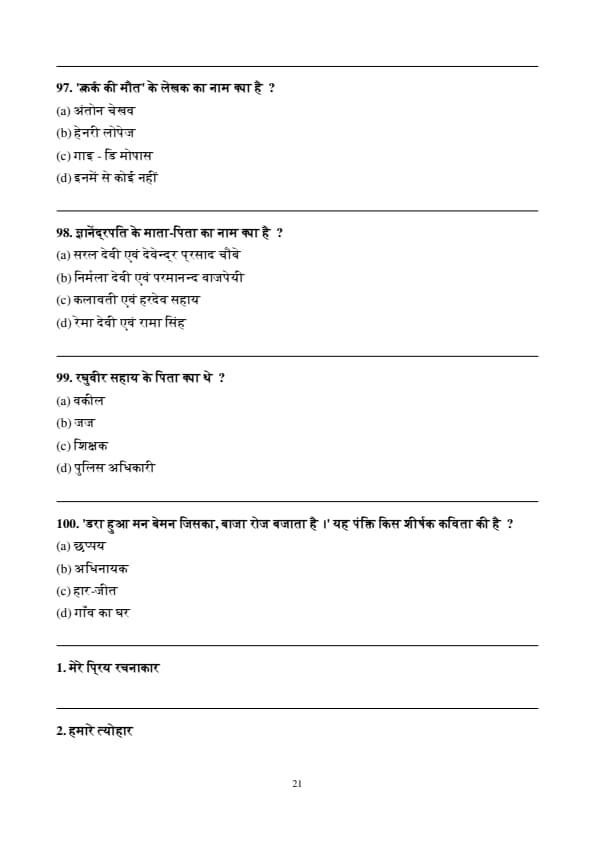
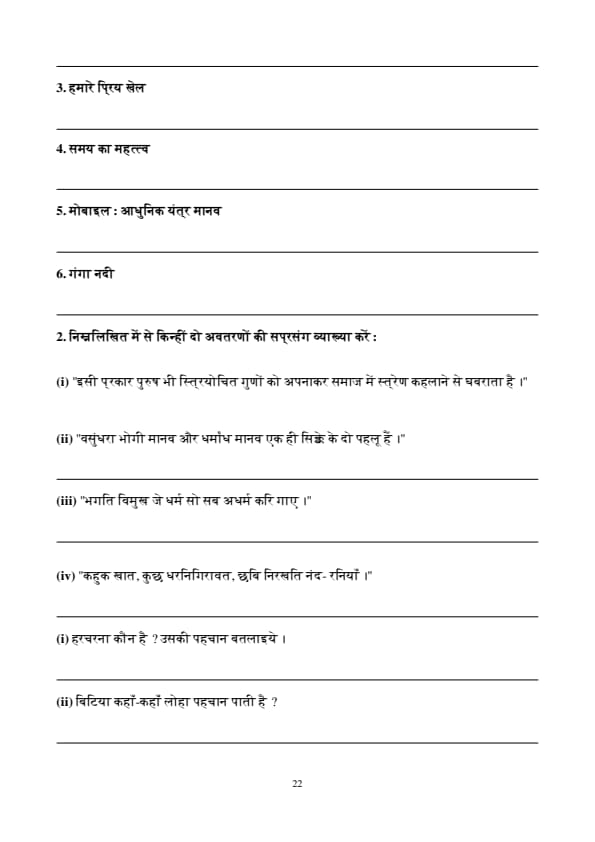
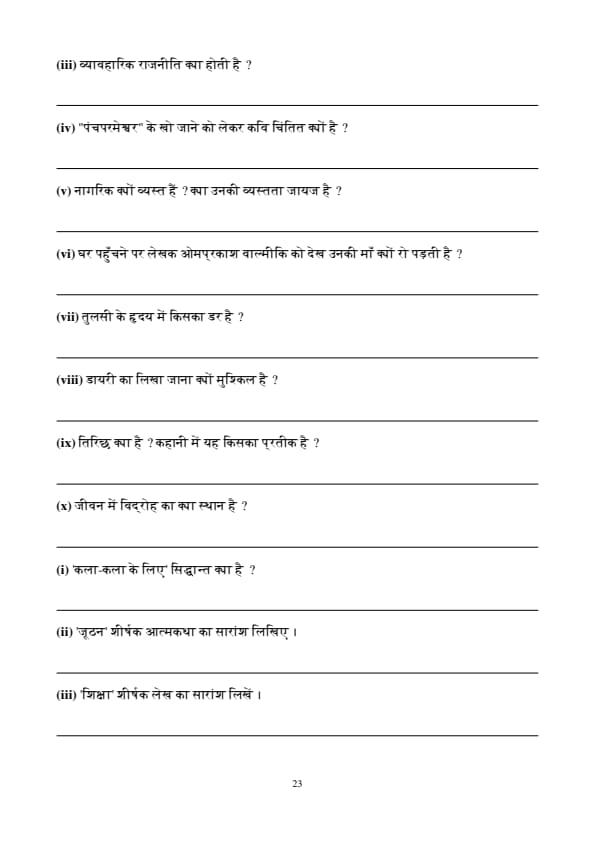
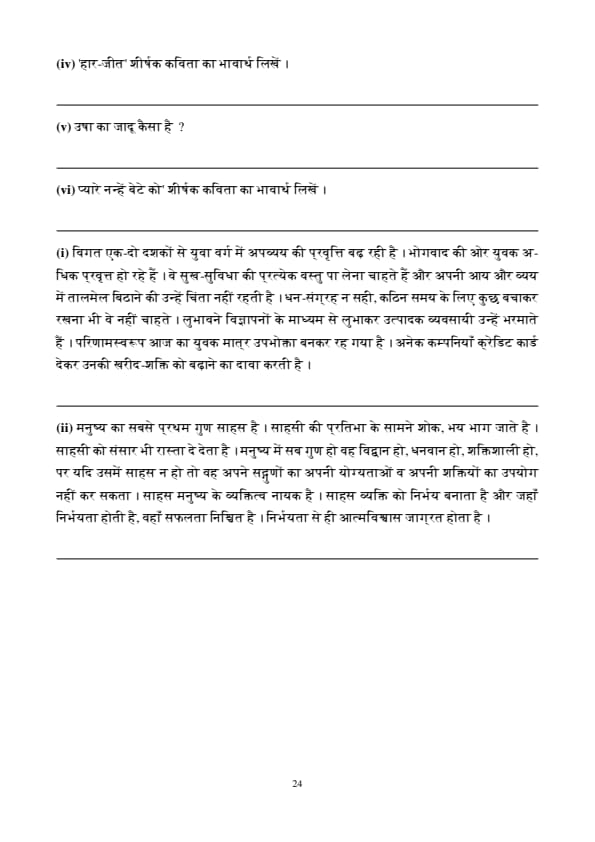



Comments